Front and Center: Susan Anand
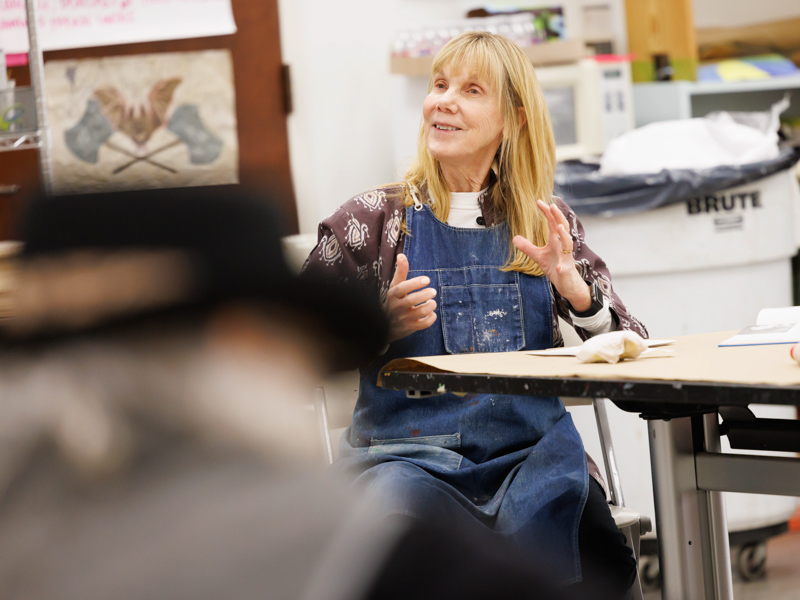
Susan Anand grew up in Indiana, the daughter of an attorney who wanted at least one of his five children to become a lawyer; so, she majored in political science.
But she also studied her first love: art. Art fought the law, and art won.
Today, Anand is a licensed art therapist, working in a field where, unlike a court of law, no one is overruled, questions can have more than one answer, and no one is judged.
A part-time instructor in the Department of Psychiatry and Human Behavior at the University of Mississippi Medical Center, Anand has, for decades, guided people through acts of creation meant to teach them something about art and, more importantly, about themselves.
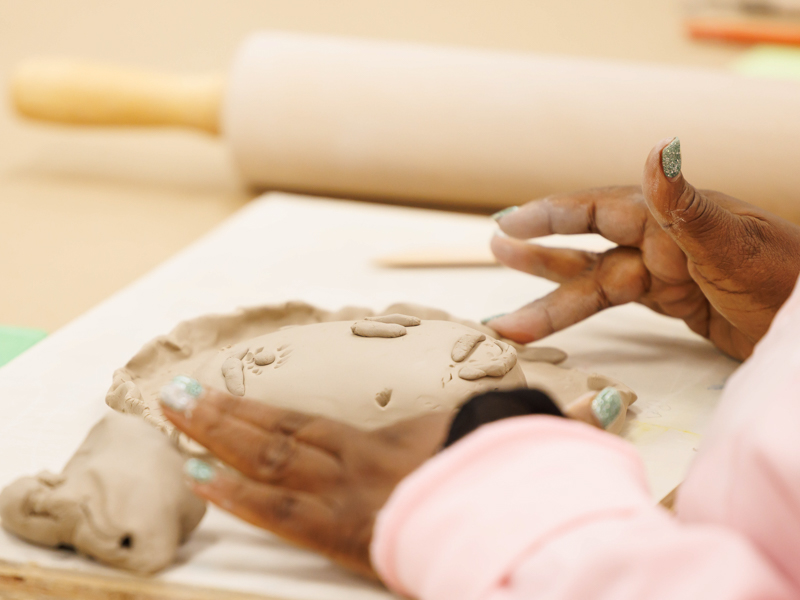
“I value the time I spend with people – hearing their stories and learning more through their art,” she said. “My profession has been and continues to be one of my passions in life; I made the right choice.”
Anand draws on her passion, and expertise, in a variety of venues and programs; one of the most striking is Art in Mind. Held at the Mississippi Museum of Art in Jackson, it offers an opportunity for self-discovery and memory recovery.
In a setting that has displayed paintings by everyone from Norman Rockwell to Picasso, participants contribute their own works of art – guided in the moment by their own emotions and imagination.
Art in Mind welcomes those who have been screened through The Memory Impairment and Neurodegenerative Dementia (MIND) Center at UMMC, which shares sponsorship with the museum. The program is for those who are facing memory loss; it is voluntary.
“Art therapists have always known the benefits of art for people with trauma or memory loss, for people who experience natural disasters, abuse, pain,” Anand said.
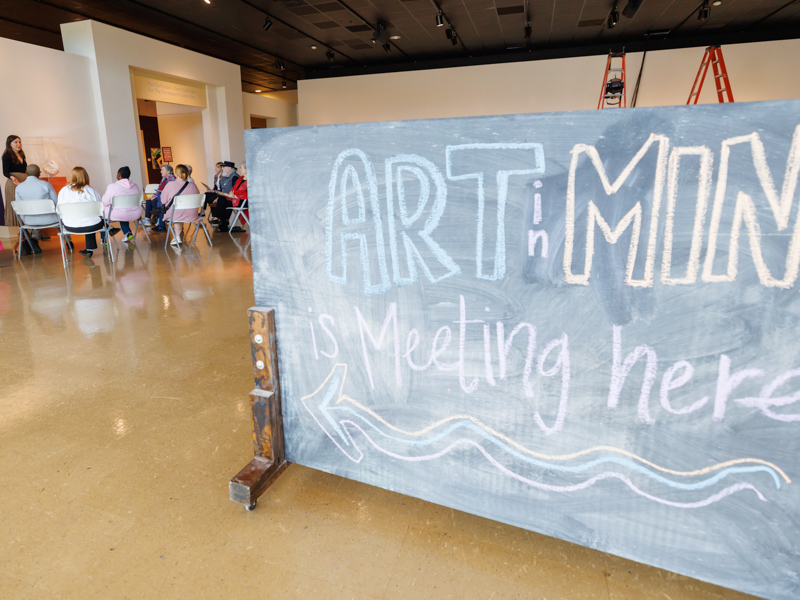
“It’s fascinating to me that, through neuro-imaging, we can see what parts of a person’s brain light up during the process of creating. And researchers at Drexel University found out that people’s stress hormones decreased after creating art.”
Certainly, her own brain lit up when she discovered a profession she hadn’t known existed. But that had to wait. First, she earned her BA in fine arts at Indiana University, where her passion grew keener.
“I would spend four hours at a time in the art studio,” she said. “It was never enough.”
A BA in fine arts didn’t open many doors for her; when it did, an art career wasn’t waiting on the other side. Anand finally found a job – which did not require an art degree. It did require compassion.
“I worked in a residential program with adolescent girls who had experienced trauma,” Anand said. “That inspired me to want to work more with people.” And, then, she found the book that showed her the way.
“It was about the ways art could help people work out their problems, even help them heal,” she said. “This was perfect; it was what I was looking for.”
Fortunately, there was a degree for that. Anand earned an MA in art therapy in 1986 at New York University, where she was trained by someone who transformed the profession with the groundbreaking notion that art itself is therapy – that it can be an outlet for, or expression of, anger, anxiety, pain.
Anand’s teacher was Edith Kramer, the “Mother of Art Therapy.''
“She believed that when people create art, they channel impulses and emotions through a process of sublimation,” Anand said.
“All art is a self-portrait. When you create art or take a picture, within that process, there’s always a part of you.”
![Trese Evans rolls out her lump of clay before shaping it into a piece of art during the March session of Art in Mind. "[Susan Anand] brings out your artistic side," she says.](/News/News_Articles/2024/04/images/Susan-Anand-11.jpg)
Long after they met, Anand co-edited a book about her mentor: “The Legacy of Edith Kramer," published in 2018. Years before that, in 1987, she imported Kramer’s views to UMMC, where she was hired, having moved to Jackson five years earlier with her husband, ENT specialist and former faculty member, Dr. Vinod Anand.
From here, her reach has stretched well beyond the Medical Center campus. Anand works with adult cancer patients in Creative Healing Studio, also held at the art museum. She offers her services to patients at Riverchase-UMMC in Flowood.
She has presented papers and conducted workshops at national and international conferences. And she is an adjunct faculty member of the MFA in Art Therapy program (Hybrid) at MIT-ADT, School of Fine Arts in Pune, India.
And, for another edition of Art in Mind, she meets with as many as a dozen participants, including, at times, their caregivers, on the last Wednesday of every month.
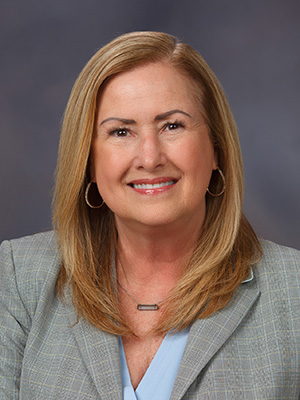
The MIND Center has been working with Anand for about eight years now, said Denise Lafferty, MIND Center administrator.
“Susan has a lovely, calm demeanor that puts everyone at ease,” Lafferty said. “She is able to gently guide everyone through the studio session; that’s so important.
“A few years ago, The MIND Center conducted a survey to discover the impact of Art In Mind on the participants. Their responses showed that it significantly reduced their stress and helped them connect with their memories.”
Libby and Charlie Hewitt of Brookhaven are among the faithful. “Susan is so encouraging,” Libby Hewitt said. “This is so worthwhile; we even participated by Zoom during the worst of COVID, and even during our vacation.”
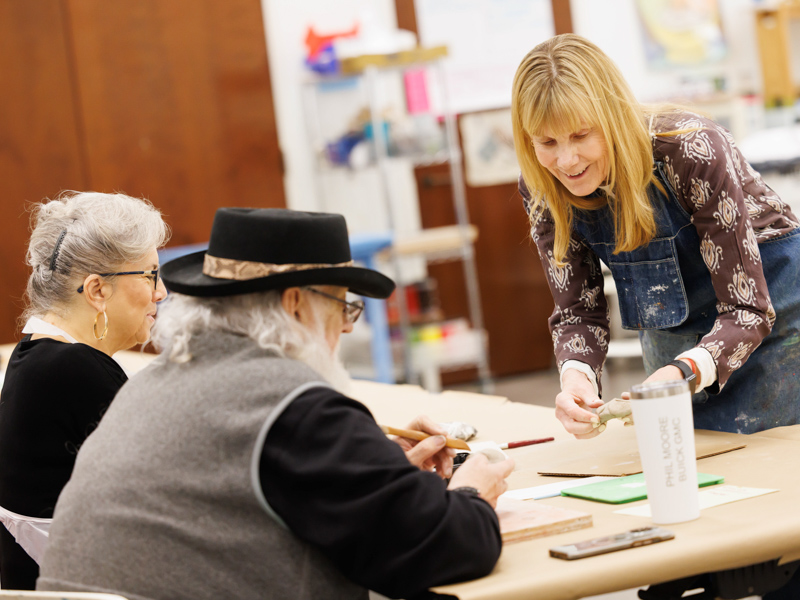
Trese Evans of Jackson described the sessions as “inspirational and enjoyable.”
“Susan is very supportive and patient; she brings out your artistic side.”
During March’s Art in Mind gathering, Anand worked with Gray Barron, the museum’s associate curator of interpretation and evaluation. When Barron asked everyone to sum up the meaning of a piece of sculpture by artist Jennifer McCurdy, she opened up a big can of inspiration.
“Vortex Vessel” is the name of the work, which the participants did not know when they responded with everything from “fire” to “freedom,” from “safety” to “tornadic,” from “fear” to “peace.” “Wings” was very popular.
Anand then led everyone to a studio, where they donned plastic smocks, seated themselves at long, white tables and stared down at a lump of clay. Before they could light into the lump, Anand turned their attention elsewhere.
“Feel your face as if you are touching it for the very first time,” she said. From the forehead southward to the chin, fingers probed, detecting changes in texture, shape, form.
“Touching things sometimes brings back memories,” Anand said. Then, they touched the clay.
“Focus on emotions and your face as you mold the clay – eyebrows; surprise, anger,” Anand said. “Think about the piece of art you viewed.”
Libby Hewitt produced a form she called “a ribbon of life,” with “ups and downs and detours … .” When Anand asked if anyone was working with their eyes closed, Hewitt smiled and said, “It may look like it, but, no. I’m scared I really look like this.”
Beside her, Charlie Hewitt “created a façade. My hat, my glasses, my beard. This is what I’m hiding behind,” he said.
At another table, Trese Evans gave her clay a mouth, ears, eyebrows and jewelry. “I kind of thought of myself when I was making it,” she said.
“If this face could talk, what would it say?” Anand asked her.
Evans took only a second to answer: “‘It’s a good day.’”


